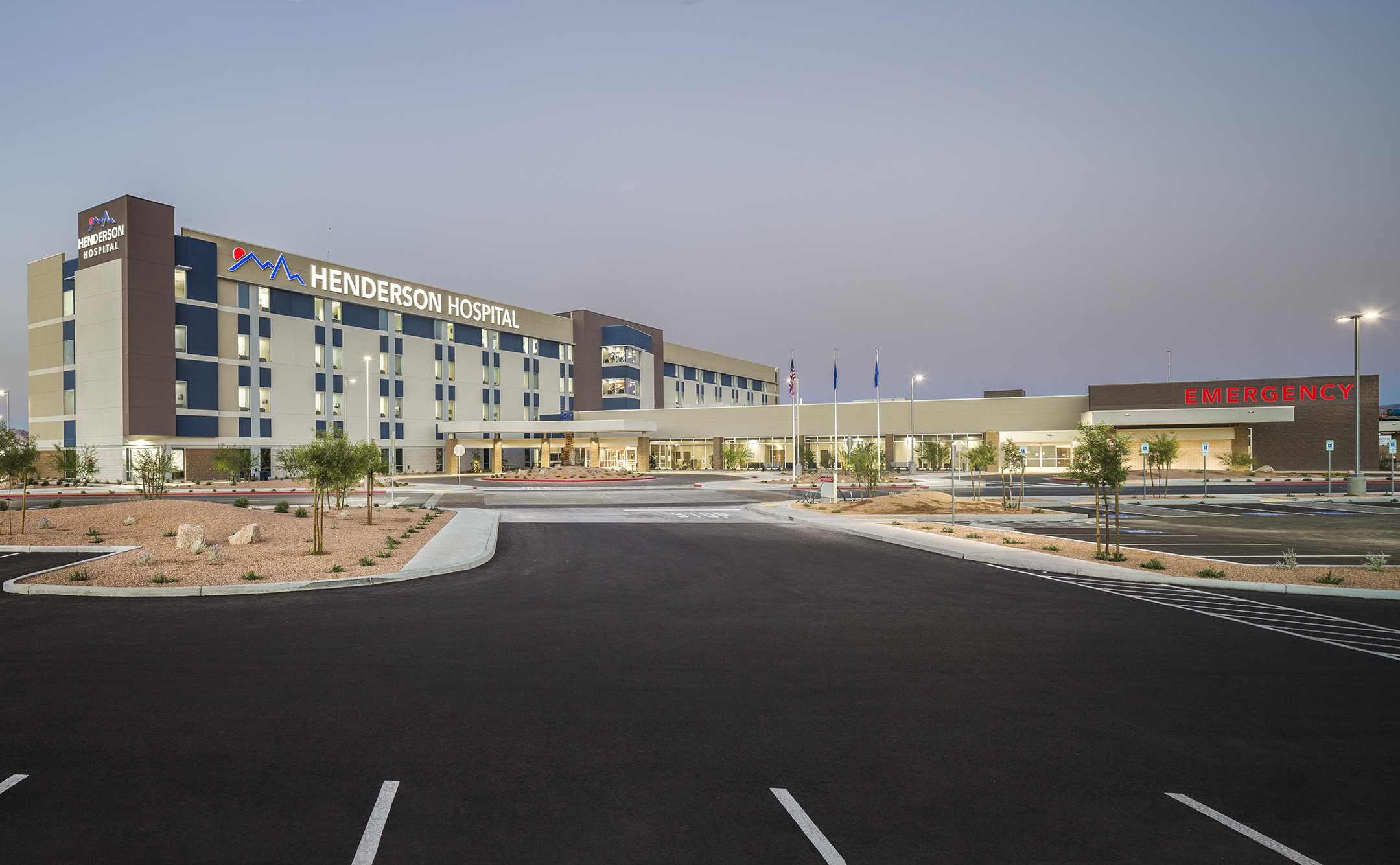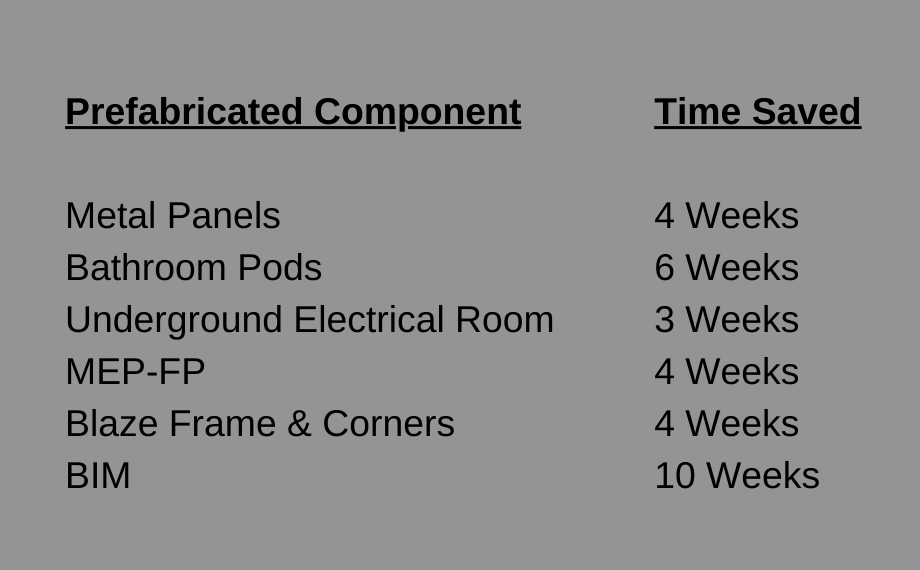Lean Process Leads to Award for Buehler Project UHS Henderson!
July 2020

Conventional thinking says it is impossible to construct a 172-bed hospital tower in less than 24 months; Lean processes got us there in 15. Recently awarded the American Society for Healthcare Engineering 2020 Vista Award for “Best New Construction” of a hospital, UHS Henderson was constructed for less than $800,000 per bed! After 12 months, maintenance costs for the facility related to design or construction issues are non-existent. In addition, the hospital received the highest scores from the HCAHPS patient perspectives survey. Located in Henderson, Nevada, this 250,000 square foot acute healthcare facility offers emergency care, women’s services, surgical services, and comprehensive patient care.
UHS Henderson's remarkable results!
- Highest HCAHPS score amongst the fourteen Southern Nevada acute-care hospitals
- Highest HCAHPS score amongst the six Valley Health System hospitals
- Energy Star Rating of 93rd percentile above in the first 12 months
- Achievement of “equivalent LEED™ Certification”
- HCAHPS scores after first-year show Cleanliness of the Hospital Environment at a rating of 82 or higher (15% above National Average)
- HCAHPS scores after first-year show Quietness of Hospital Environment at a rating of 67 or higher (15% above National Average)
- Hospital Acquired Infections (HAIs) rate is under the National Average by 10% for the first 12 months
Key questions that should be asked on your next project:
How do you get results like those noted above? By having direct user input from the beginning, selecting a team whose focus is on optimizing the whole and not their own part of the project, selecting the right people, and not losing focus of the true goal - delivering exceptional operational and patient health care.
How do you make sure the Users get exactly what they need and there are no surprises when they occupy the facility? Pre-construction mock-ups of critical rooms and areas for the staff’s feedback to ensure all of the components are where they need to be to operate the facility efficiently.
How can we have cost reliability? Rather than budgeting a detailed design, we can design to a detailed budget by incorporating a Target Value Design process.
How can we continue to make improvements and stop making the same previous mistakes again and again? By utilizing a Retrospective process from past projects and past decisions, in the middle of design, or in the middle of construction. We, as a team, can capture lessons learned and simply ask three questions: What should we keep doing that’s working well? What should we stop doing that is not working at all? and What should we start doing that we haven’t been doing that could provide value to improve the process? This process is called Continuous Improvement and is part of the Plan, Do, Check, Act (Adjust) process that was utilized in Lean manufacturing.
How can we affect the outcomes for this hospital by decreasing the cost and schedule while increasing the job site safety, quality of the facility, and patient experience? Make innovation a mandatory, measured requirement. At UHS Henderson, the Innovation Cluster generated over 150 ideas.
How do you build a facility for under $800,000 per bed? By selecting a high performing Lean, IPD team in the right market with the right people, the right experience, and the right attitude to make the commitment, effort, and focus on the targeted results and outcomes the priority.
How do you build a ground-up 250,000 square foot hospital from the first foundation pour to Certificate of Occupancy in 15 months? Disciplined use of the Last Planner System (Pull Planning) to create production reliability and developing a prefabrication strategy. At UHS Henderson, prefabrication of construction components saved the project the following duration:

What do you “Pull” your schedule from? Is it permitting, construction, or first patient day? All of them. Buehler led the Pull Planning effort which required constant re-pulling and re-planning throughout the design and construction schedule to determine the most efficient way to deliver the project.
How do you collaborate and get answers to advance the design and construction in a timely fashion? By utilizing Big Rooms and co-location where all of the design and construction participants can collaborate and swarm constraints and opportunities as they appear throughout the project delivery.
How do you make system selections that provide the greatest value for the project? By utilizing a set-based design approach that involves the whole team and not just one discipline. This process to make sound decisions and to document the results is called “Choosing By Advantages” (CBA). Decisions are made transparent and verifiable with decisions recorded in A3’s for learning.
How do you build a team and select the right partners to deliver the project? After prequalification, conduct a roundtable discussion (not presentation) to meet the actual people that will be working day-to-day on the project. Remember, “It’s All About the People.” Consider building the team one partner at a time to build trust and co-ownership of outcomes.
How can you predict success for your next project? You can increase your odds for success dramatically by following a Lean Integrated Project Delivery process, asking the right questions, and selecting the right people who have expertise in their field of practice AND can provide the Lean leadership to success.